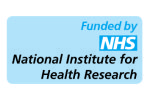Cleft lip and palate: Improve centralised model of care to ensure best outcomes for children

This research assesses the impact of centralising cleft lip and palate care services on child outcomes, 15 years after centralisation.
About the research
Each year around 1000 children are born with cleft lip and/or palate in the United Kingdom. Many require long term multi-disciplinary care. Twenty years ago, children with cleft lip and/or palate were treated in 57 centres. The Clinical Standards Advisory Group (CSAG) survey of five year olds conducted in the mid-1990s showed that outcomes across a range of domains (including facial growth and speech) were poor.
Following publication of the CSAG survey, services across the United Kingdom were centralised. This happened more quickly in some regions. Care for children with cleft lip and/or palate is now provided by multi-disciplinary teams working in 11 managed clinical networks.
We carried out a repeat nationwide cross-sectional survey of five year olds some 15 years later to evaluate the impact of this centralised, audited multi-disciplinary care model. We collected comprehensive data on care and outcomes from 268 children with unilateral cleft lip and palate.
Image: CLAPA
Policy implications
- The established multi-disciplinary centralised service should be maintained. To do this, surgeons should continue to meet case load targets, multi-disciplinary teams should be fully staffed and there should be clarity over funding for the service.
- Centres should develop audits of practice so that regular audit continues but is widened to include provision of care, leading to demonstrable improvements in practice.
- Commissioners and centres need to work together to develop and fund an integrated comprehensive speech and language therapy and ear nose and throat/audiology service across tertiary and primary care to support the development of speech and language in children with cleft lip and/or palate.
- Commissioners and centres need to work together to develop and fund a programme of preventive care and oral health promotion that reduces the prevalence of dental decay in children with cleft lip and/or palate.
- Centres and academics need to work together to create a research-led service that conducts and supports collaborative research. This should develop and expand the evidence base to inform the care of future generations of children born with cleft lip and/or palate.
Key findings
- Most outcomes (facial growth, appearance, speech) have improved since the mid-1990s. For example, the proportion of children with good or excellent dento-alveolar arch relationships (a measure of facial growth) increased from 30% to 53%.
- Some important outcomes have not improved (oral health and hearing). Forty five percent of children were free of dental decay in the original survey compared to 48% in the current survey.
- Even for improved outcomes there was still a proportion of children with poor results. Seventeen percent of children still had unintelligible or just-intelligible speech.
- Between centres there was substantial variation in practice (for oral health prevention measures, hearing and speech treatment) and for some outcomes (e.g. speech intelligibility where the centre explained 13% of the observed variation in outcome).
- Care predicts outcome. Good hearing and provision of speech intervention predicted good speech suggesting that child outcomes could be improved with better service. Use of preventative oral health measures such as fluoride tablets and varnish were low and associated with higher risk of decay. This suggested they were being used to treat rather than prevent disease.
Further information
The Cleft Care UK study: parts 1-6 Orthodontics and Craniofacial Research 2017; 20, Supplement S2: 1-51. In press June 2017
Centralisation of cleft care in the United Kingdom: results of the Cleft Care UK study. Orthodontics and Craniofacial Research 2015; 18, Supplement S2: 1–62.
Centralization of services for children born with orofacial clefts in the United kingdom: a cross-sectional survey. The Cleft Palate-Craniofacial Journal 2014;51: e102-9.
Clinical Standards Advisory Group. Cleft Lip and/or Palate, HSMO, ISBN 0-11-322103-7 London, 1998.
Funding
This publication presents independent research commissioned by the National Institute for Health Research (NIHR) under its Programme Grants for Applied Research scheme (RP- PG- 0707- 10034). The views expressed in this publication are those of the author(s) and not necessarily those of the NHS, the NIHR or the Department of Health.
Policy Briefing 44: October 2017
Cleft lip and palate: Improve centralised model of care to ensure best outcomes (PDF, 196kB)
Contact the researchers
Andy Ness, Professor of Epidemiology, University of Bristol.
andy.ness@bris.ac.uk
Jonathan Sandy, Professor of Orthodontics, University of Bristol.
jonathan.sandy@bris.ac.uk
Authors
Andy Ness, NIHR Bristol Biomedical Research Centre, University of Bristol; Jonathan Sandy, Andrea Waylen, Andrew Wills, Yvonne Wren, Bristol Dental School, University of Bristol; Amanda Hall, Life and Health Sciences, Aston University; Debbie Sell, North Thames Regional Cleft Service, Great Ormond Street Hospital NHS Foundation Trust; Jackie Smallridge, Lucy Southby, Cleft.NET. East, Cambridge University Hospitals NHS Foundation Trust; David Stokes, Cleft Lip and Palate Association
